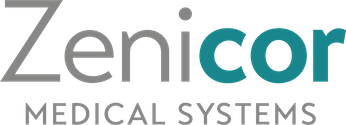Medical background
Arrhythmia is the collective name for conditions that affect the electrical system of the heart.
They are traditionally diagnosed using ECG but the difficulty lies in the fact that many arrhythmias occur at long intervals. Symptoms such as dizziness, fainting, shortness of breath and heart palpitations may arise in a few seconds but disappear just as quickly, which is why they are difficult to detect with a regular resting ECG at a hospital or with a continuous ECG over a few days.
Atrial fibrillation is the most common rhythm abnormality and one of the most widespread conditions among the population. Around 200,000 Swedes have been diagnosed with atrial fibrillation, which is the equivalent of just over 2% of Sweden’s population. Several research publications indicate, however, that there may be as many as 300,000 people affected by the condition. This is because atrial fibrillation often comes and goes and does not always cause symptoms. Around a third of all atrial fibrillation sufferers have no symptoms and are therefore rarely discovered in routine health checks.
The most feared consequence of atrial fibrillation is stroke, a blood clot in the brain. People with atrial fibrillation are five times as likely to have a stroke. Stroke caused by atrial fibrillation gives rise to more debilitating disabilities and has a higher mortality rate. At least 30% of all stroke patients are estimated to have atrial fibrillation.
A stroke is often a disaster for those affected. A third of all those who have had a stroke die, and a further third are severely disabled for life. Stroke is one of the diseases that results in the highest medical costs. In Sweden 30,000 people have a stroke each year, and the cost to society of stroke care and rehabilitation amounts to over SEK 16 billion per year.
Many of these cases can be prevented if atrial fibrillation is diagnosed and treated at an early stage. The most important treatment for atrial fibrillation is anticoagulant medication, which reduces the risk of stroke by around 70%. In recent years new anticoagulants have been launched on the market as an alternative to traditional treatment. Thanks to this, stroke prevention in cases of atrial fibrillation has been highlighted as an issue of priority.

